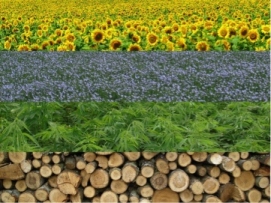Overview on Biobased Building Material made with plant aggregate
DOI:
https://doi.org/10.21809/rilemtechlett.2016.9Keywords:
Bio-based building materials, Vegetal aggregates, Sustainability, Physical properties, Life cycle analysisAbstract
Global warming, energy savings, and life cycle analysis issues are factors that have contributed to the rapid expansion of plant-based materials for buildings, which can be qualified as environmental-friendly, sustainable and efficient multifunctional materials. This review presents an overview on the several possibilities developed worldwide about the use of plant aggregate to design bio-based building materials. The use of crushed vegetal aggregates such as hemp (shiv), flax, coconut shells and other plants associated to mineral binder represents the most popular solution adopted in the beginning of this revolution in building materials. Vegetal aggregates are generally highly porous with a low apparent density and a complex architecture marked by a multi-scale porosity. These geometrical characteristics result in a high capacity to absorb sounds and have hygro-thermal transfer ability. This is one of the essential characteristics which differ of vegetal concrete compared to the tradition mineral-based concretes. In addition, the high flexibility of the aggregates leads to a non-fragile elasto-plastic behavior and a high deformability under stress, lack of fracturing and marked ductility with absorbance of the strains ever after having reached the maximum mechanical strength. Due to the sensitivity to moisture, the assessment of the durability of vegetal concrete constitutes one of the next scientific challenging of bio-based building materials.
Downloads
Published
How to Cite
Issue
Section
License
Authors retain copyright of the articles published in RILEM Technical Letters and grant the journal the right of first publication with open access. The work is simultaneously licensed under Creative Commons Attribution 4.0 International License (CC BY 4.0) that allows others to share and adapt the work under the following terms: 1) a proper attribution is given in a form of a reference to the original work's authorship and initial publication in RILEM Technical Letters (bibliographic record with the DOI link); 2) a link to the license is provided; 3) the changes (if any) are indicated.









